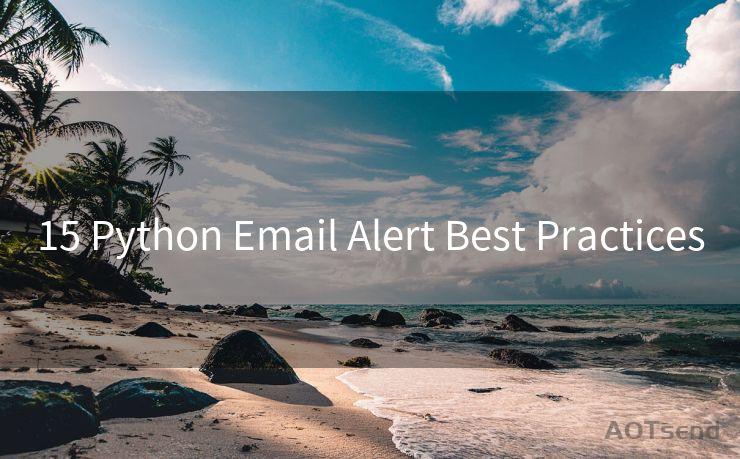15 Python Email Alert Best Practices




1. Introduction
In today's digital age, email alerts have become an integral part of many applications, helping users stay informed and respond quickly to important events. Python, as a versatile programming language, offers powerful libraries for sending automated emails. However, to ensure these alerts are effective and user-friendly, it's crucial to follow best practices. In this article, we'll explore 15 best practices for implementing Python email alerts.
2. Clear and Concise Subject Lines
The subject line is the first thing recipients see, so it's essential to make it clear and concise. Avoid vague or misleading subjects, and instead, opt for direct and informative ones.
3. Relevant Content
Ensure the email body contains relevant information about the alert. Include details about the event that triggered the alert, any necessary actions, and contact information for further assistance.
4. Use Templates
For consistency and efficiency, use email templates. This allows for a unified format and easier maintenance. Libraries like Jinja2 can help manage dynamic content within templates.
5. Personalization
Personalize emails by addressing the recipient by name and tailoring the content to their specific needs or interests. This increases engagement and relevance.
6. Unsubscribe Option
Always include an unsubscribe option in your emails. This is not only a best practice but also often required by law to comply with anti-spam regulations.
7. Test in Different Email Clients
Emails can render differently depending on the email client used. Test your emails in multiple clients to ensure they display correctly.
8. Optimize for Mobile
Many users check their emails on mobile devices. Ensure your email alerts are mobile-friendly with responsive design.
9. Secure Your Emails
Use encryption protocols like SSL/TLS when sending emails to ensure data security. This is especially important if the emails contain sensitive information.

10. Manage Bounce Rates
Monitor and manage bounce rates to ensure your emails are reaching their intended recipients. Use tools like SendGrid or Mailgun for effective email delivery.
11. Avoid Spam Filters
Familiarize yourself with common spam trigger words and avoid using them in your subject lines or email body. Also, use a reputable SMTP server for sending emails.
12. Send Timely Alerts
Ensure alerts are sent out in a timely manner. Delayed alerts can reduce the effectiveness of the notification system.
13. Throttling
If sending bulk emails, implement throttling to avoid flooding the recipient's inbox and potentially triggering spam filters.
14. Provide Feedback Loop
Allow recipients to provide feedback on the email alerts. This can help improve the system and make it more user-friendly.
🔔🔔🔔
【AOTsend Email API】:AOTsend is a Managed Email Service for sending transactional emails. Support Email Types: reminders, authentication, confirmations, notifications, verification codes, invoices, password resets, account activations, billing statements, two-factor authentication (2FA), and one-time passwords (OTP) emails, etc. $0.28 per 1000 Emails. 99% Delivery, 98% Inbox Rate.
You might be interested in:
Why did we start the AOTsend project, Brand Story?
What is a Managed Email API, How it Works?
Best 25+ Email Marketing Platforms (Authority,Keywords&Traffic Comparison)
Best 24+ Email Marketing Service (Price, Pros&Cons Comparison)
Email APIs vs SMTP: How they Works, Any Difference?
15. Regularly Audit and Update
Regularly review and update your email alert system. Technologies and best practices evolve, so it's important to stay up to date.
Conclusion
By following these 15 best practices, you can create an effective and user-friendly Python email alert system. Remember, the key is to ensure relevance, timeliness, and user satisfaction. By doing so, you'll build a robust notification system that keeps users informed and engaged.




Scan the QR code to access on your mobile device.
Copyright notice: This article is published by AotSend. Reproduction requires attribution.
Article Link:https://www.mailwot.com/p2397.html



